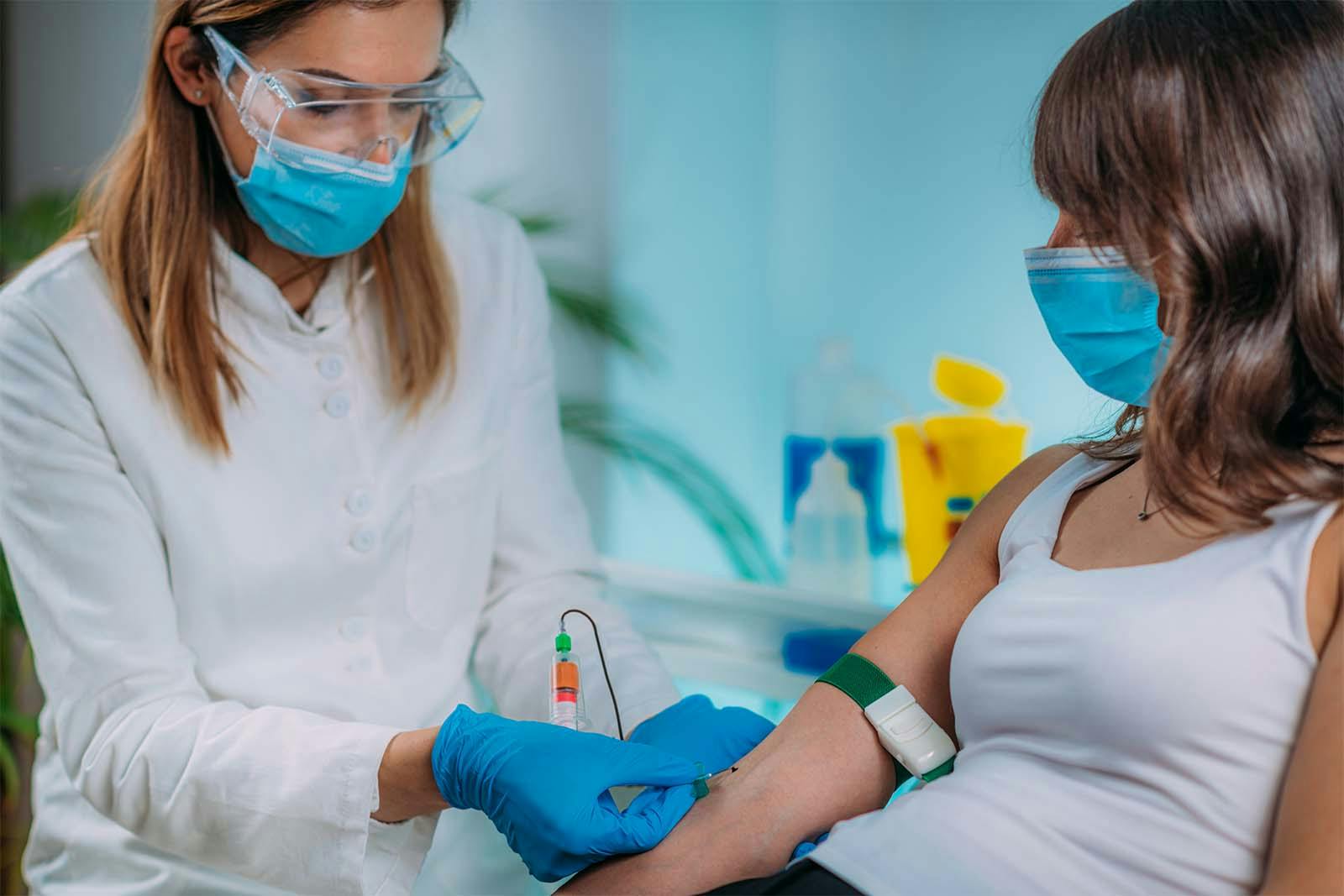Phlebotomy is the act of removing blood from the body for medical examination, usually by puncturing a vein in the arm with a needle. This is also known as a venipuncture or a blood draw.
Table of Contents
- What is a Phlebotomist?
- What They Do
- Job Outlook
- Required Certifications
- How To Become a Phlebotomist in California
- Starting Your Phlebotomy Career
The blood is usually drawn into a vial and sent to a laboratory for analysis. Healthcare workers may collect these blood samples in order diagnose a patient’s medical condition or form a diagnosis.
Sometimes this blood is withdrawn from the patient as a treatment for specific medical conditions or blood disorders. These are known as therapeutic phlebotomies, and are used to remove misshapen red blood cells or extra iron in the bloodstream. Blood disorders where therapeutic phlebotomies may be necessitated include:
- Hemochromatosis
- Polycythemia vera
- Porphyria cutanea tarda
- Sickle cell disease
- Nonalcoholic fatty liver disease
What Is a Phlebotomist?
Phlebotomists draw blood from patients for testing, so the blood can be analyzed in a medical laboratory. A phlebotomist may also prepare blood for transfusions, or collect blood for donations to a blood bank.
Typically, phlebotomy technicians collect blood via venipuncture, but may also use finger pricks, or if they work in pediatric medicine with infants, heel pricks.
Usually, phlebotomists work in hospitals, medical offices, clinics, diagnostic labs, or blood donation centers. Phlebotomy technicians are heavily trained in maintaining sterile environments, avoiding cross-contamination, upholding healthcare law, and preserving medical privacy.
What Does a Phlebotomist Do?
Phlebotomists draw blood from patients for lab tests, diagnosis, blood donations, or research. The phlebotomy technician is an important person in the healthcare ecosystem.
On any given day, a phlebotomist may perform these duties:
- Prepare patients for a blood draw.
- Walk patients through the blood draw process if they are nervous
- Conduct blood draws and blood transfusions with patients.
- Verify patient identities for correct labelling of blood samples.
- Maintain, label, and track patient blood samples.
- Organize and maintain blood collection equipment.
- Assist patients who have adverse reactions to blood draws or transfusions.
- Help physicians or other healthcare professionals.
Job Outlook for Phlebotomists
There will be great demand for certified phlebotomists over the next decade. The Bureau of Labor Statistics projects that jobs for phlebotomists will increase by 22% between 2020 and 2030 which is much faster than growth for most jobs. The BLS also reported the median pay for phlebotomy technicians in May 2020 was $36,320 per year, and median hourly pay in 2020 was $17.46 per hour.
Note: The data provided above are from a source unaffiliated with Campus, formerly known as MTI College, are for informational purposes only and represent the employment field as a whole. They are not solely specific to Campus graduates and, by providing the above information, Campus makes no representation, direct or implied, or opinion regarding employability.
Where Do Phlebotomists Work?
According to BLS numbers from May 2023, most phlebotomists work in hospitals. Here are the top five employer categories for phlebotomists.
| Hospitals | 35% |
| Medical and diagnostic laboratories | 31% |
| Ambulatory healthcare services | 17% |
| Physician’s offices | 8% |
| Outpatient care centers | 2% |
What Certifications are Required to Become a Phlebotomist?
Most employers require phlebotomist technicians to earn a certification or non-degree diploma from an accredited college, university, or vocational school.
It is also customary for employers to require phlebotomists on staff to maintain certification from a recognized certifying organization. These certifying bodies may include the National Center for Competency Testing (NCCT), the National Health Career Association (NHA), the American Society for Clinical Pathology (ASCP) or the American Medical Technologists (AMT).
Maintaining certification may require additional training hours at regular intervals.
There are four states which require phlebotomists to earn special state certification: California, Washington, Nevada, and Louisiana.
How To Become a Phlebotomist in California
Most employers require candidates to have earned professional phlebotomy certification from a recognized training program.
Phlebotomy programs typically are less than one year in length, and include classroom training and hands-on clinical training. The Phlebotomy certification program at Campus is 16 weeks long for qualified applicants.
At Campus, at completion of the Phlebotomy program, students are prepared to take the National Certified Phlebotomy Technician (NCPT) exam.
To become a certified phlebotomist in California, follow these steps:
1. Enroll in and complete a phlebotomy training and certification program at an accredited college or vocational school approved by the California Department of Public Health, that includes both classroom training and a hands-on externship.
2. Successfully pass the Phlebotomy Technician certification exam and receive your certification.
3. Apply to the State of California for your Certified Phlebotomy Technician Certificate (CPT I).
Starting Your Phlebotomy Career
If you’re located in the Sacramento area, and interested in starting your career in healthcare, Campus offers both a Phlebotomy Certification Program and a Medical Assisting with Phlebotomy Certification Program. Healthcare jobs are projected to be in high demand for the next decade, and we can help get you started in a rewarding career.
If you have any questions, call our team at 888-675-2460 or use the Request Information form today. You can also complete the online application and an admissions advisor will walk you through the process.
We look forward to helping you start your healthcare career.
